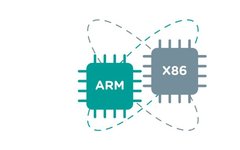Can ARM Challenge X86 in PC Chips?
Source: Semiconductor Industry Observation Original Author: Gong Jiajia More than twenty years ago, Microsoft’s Windows operating system and Intel’s X86 chips formed a “duopoly” that dominated the computer market until they encountered Apple. Apple’s rise caused cracks in the once unbreakable Wintel alliance, and “Windows + X86” was no longer the only option; you could … Read more









